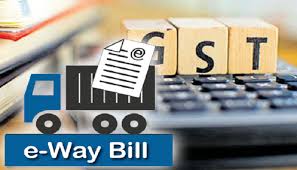Quick Review on E-way Bill
Page Contents

Quick Review on E-way Bill
E -way bill
An E-way bill is an electronic way bill for the movement of goods that can be generated on the GSTN portal. E-way bill contains the details of transported goods besides the name of consignor and consignee of such goods. It is the evidence of the genuineness of supply of goods from one place to another.
E-way bill is required to be generated for consignment of goods of value exceeding Rs 50000. (Generating an e-way bill for consignments valuing less than Rs 50000 is optional)
When should an E-Way Bill be generated?
E-way bill is required to be generated for any movement of goods, due to any of following reasons:
- In relation to supply
- For reasons other than supply
- For inward supply from an unregistered persons
Who can Generate GST E-Way Bill?
- If a taxable person is registered under GST wants to transport goods using own vehicle or hired vehicle as a supplier or to be received in the course of business as a recipient, the taxable person can generate a E-Way Bill in Form GST INS-1 electronically on the GST Common Portal by providing information requested in Part B of FORM GST INS-01.
- If a transporter is involved in the transfer of Goods, then the taxable person registered under GST must furnish information about the consignment in Part B of FORM GST INS-01 on the GST Common Portal.
- Using this information, the transporter would then generate a E-Way Bill on the basis of the information provided by the taxable person in Part A of FORM GST INS-01. Transporters are allowed to generate and carry E-Way bill even if the value of the consignment is less than Rs.50, 000.
- Finally, any unregistered person transferring goods to a taxable person under GST can also generate e-way bill in FORM GST INS-01 on the GST Common Portal
Canceling a GST E-Way Bill
E-way bill will also be allowed to be generated or canceled through SMS.
When an e-way bill is generated a unique e-way bill number (EBN) is allocated and is available to the supplier, recipient, and the transporter.
Once a GST E-Way Bill is generated but goods were not transported or are not being transported, then the GST e-way bill can be cancelled through the GST portal or through a GST Facilitation Centre within 24 hours of generation of the e-way bill.
Validity of E-Way Bill
| Distance | Valid for |
| Upto 100 km | 1 day |
| 100 km or more but less than 300 km | 3 day |
| 300 km or more but less than 500 km | 5 day |
| 500 km or more but less than 1000 km | 10 day |
| More than 1000 km | 15 day |
Exceptions to E-way bill requirement
No e-way bill is required to be generated in the following cases
- Transport of goods as specified in Annexure to Rule 138 of the CGST Rules, 2017
- goods being transported by a non-motorized conveyance;
- goods being transported from the port, airport, air cargo complex and land customs station to an inland container depot or a container freight station for clearance by Customs
- in respect of movement of goods within such areas as are notified under rule 138(14) (d) of the SGST Rules, 2017 of the concerned State;
- Consignment value less than Rs. 50,000/
Goods worth more than Rs.50, 000 are transported from one place to another an e-way bill is required. In case goods are transported without an e-way bill, the goods can be seized by a GST officer and a penalty could be levied.
Latest updates on the e- way bill
The GST council in an earlier meeting in October had decided that the E-way bill would be introduced in a staggered manner from January 1 and subsequently nationwide from April 1.
In the recent 24th, GST council meeting was finally decided that the e-way bill is now introduced and will be applicable from 1st February 2018 across the nation. The nationwide e-way bill system will be ready to be rolled out on a trial basis latest by 16 January 2018. Trade and transporters can start using this system on a voluntary basis from 16 January 2018
The states can opt to follow the e-way bill system any time before 1st June 2018
From 1st June 2018 e-way bill rules will uniformly apply to all states.
Popular blog:-
